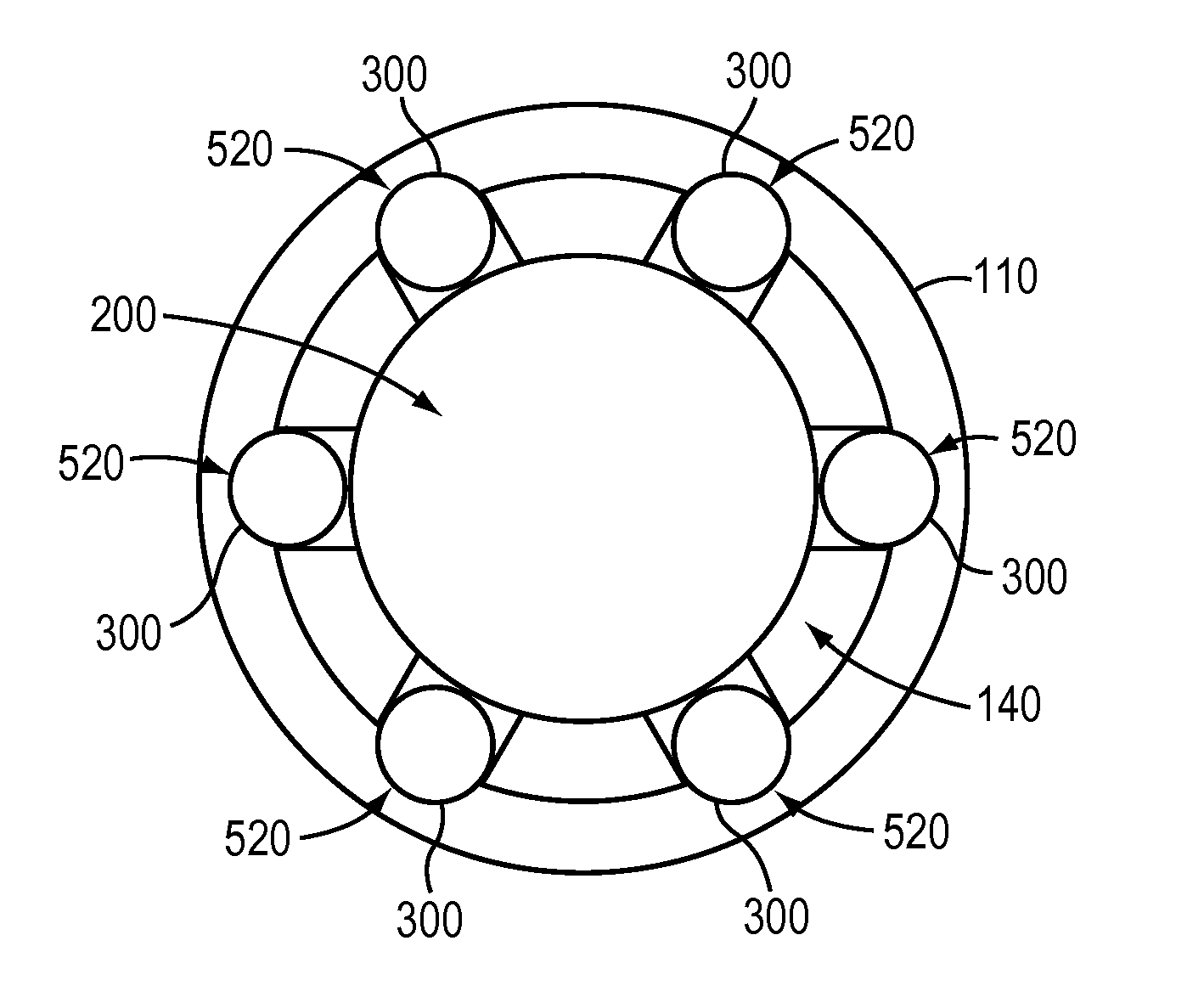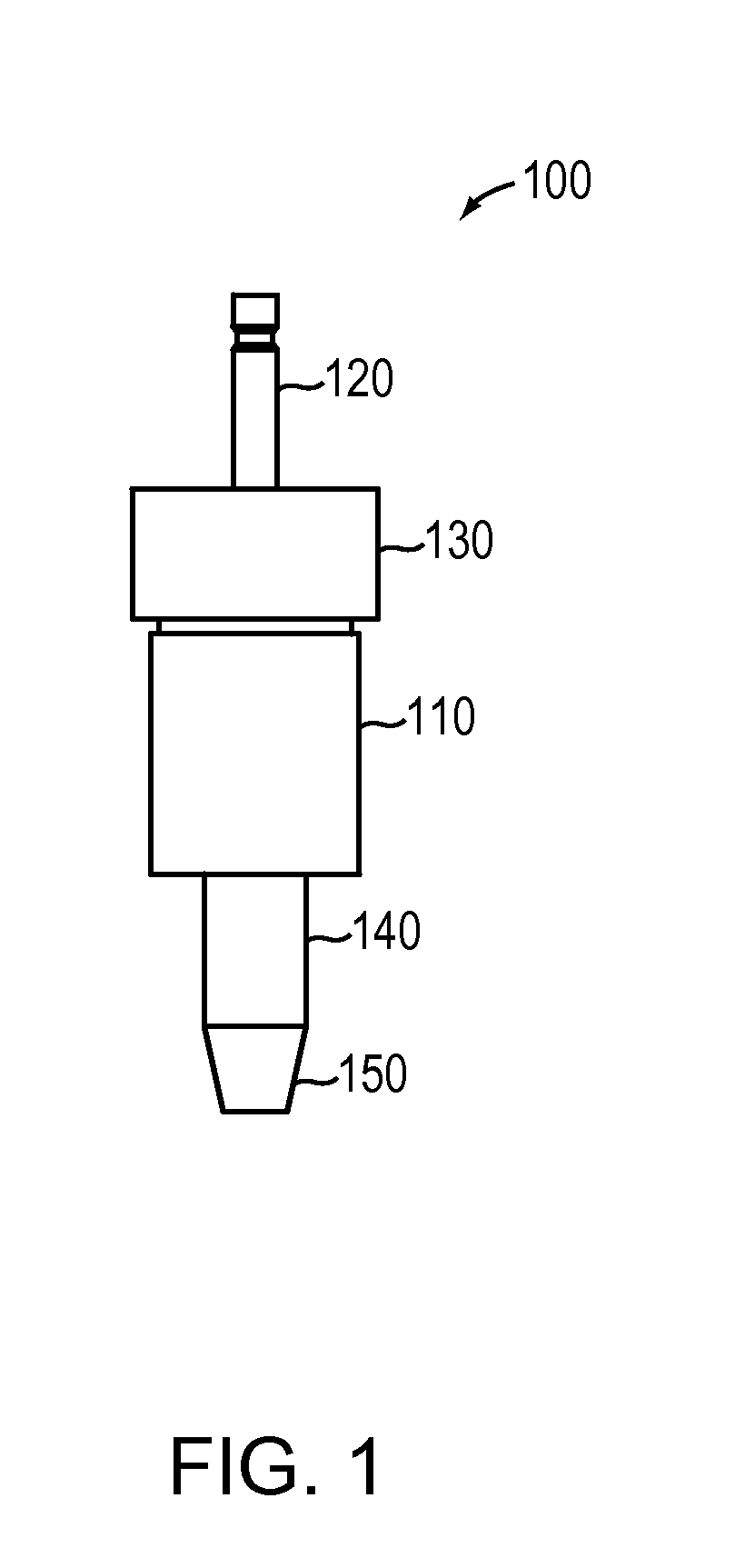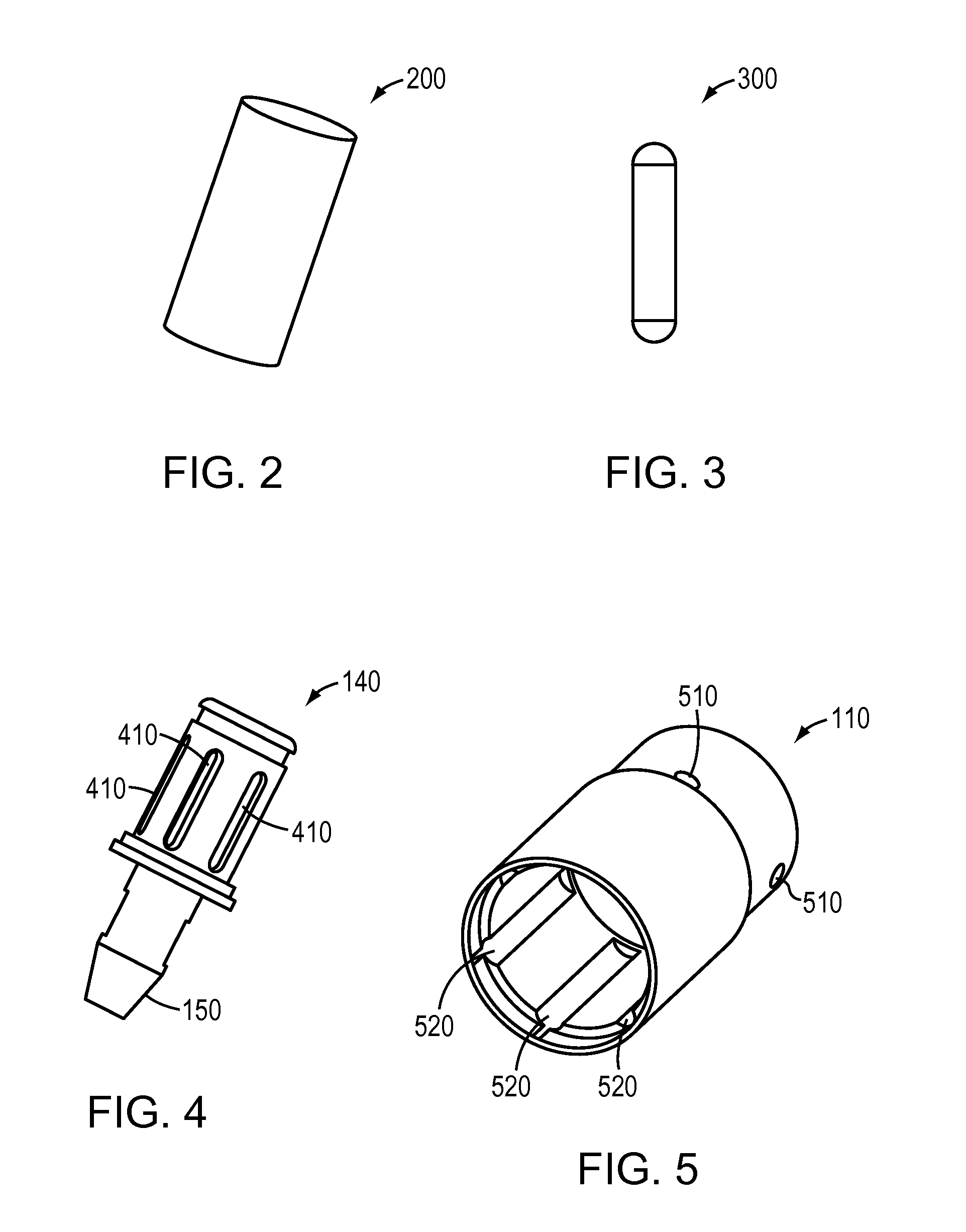Torque limiter
a limiter and torque technology, applied in the direction of couplings, mechanical devices, slip couplings, etc., can solve the problems of excessive torque, damage to the bone, and “strip” threads in the bone,
- Summary
- Abstract
- Description
- Claims
- Application Information
AI Technical Summary
Benefits of technology
Problems solved by technology
Method used
Image
Examples
Embodiment Construction
[0026]As shown in FIG. 1, an example torque limiter 100 according to an illustrative embodiment of the present disclosure includes an outer cylindrical housing 110 to which torque is applied via a shaft 120 affixed thereto by a coupling 130. The shaft 120 may be attached to a hand tool (not shown), for example to a ratcheting or non-ratcheting driver, or to a power tool (not shown), for example an electric or pneumatic drill, which is used to generate torque.
[0027]An inner cylindrical housing 140 (only partially visible in FIG. 1) is disposed within the outer cylindrical housing 110. The inner cylindrical housing 140 is affixed to an adaptor 150 which may be coupled to a bit (not shown) or other implement for delivering torque to a load, for example a screw or other fastener. The adaptor 150 may be a standard adaptor, for example, an AO pull adaptor, an AO push adaptor, a ¼ inch square adaptor, a small Zimmer adaptor, a Hudson adaptor, a standard Zimmer adaptor, ¼ inch square quick ...
PUM
 Login to View More
Login to View More Abstract
Description
Claims
Application Information
 Login to View More
Login to View More - R&D
- Intellectual Property
- Life Sciences
- Materials
- Tech Scout
- Unparalleled Data Quality
- Higher Quality Content
- 60% Fewer Hallucinations
Browse by: Latest US Patents, China's latest patents, Technical Efficacy Thesaurus, Application Domain, Technology Topic, Popular Technical Reports.
© 2025 PatSnap. All rights reserved.Legal|Privacy policy|Modern Slavery Act Transparency Statement|Sitemap|About US| Contact US: help@patsnap.com



